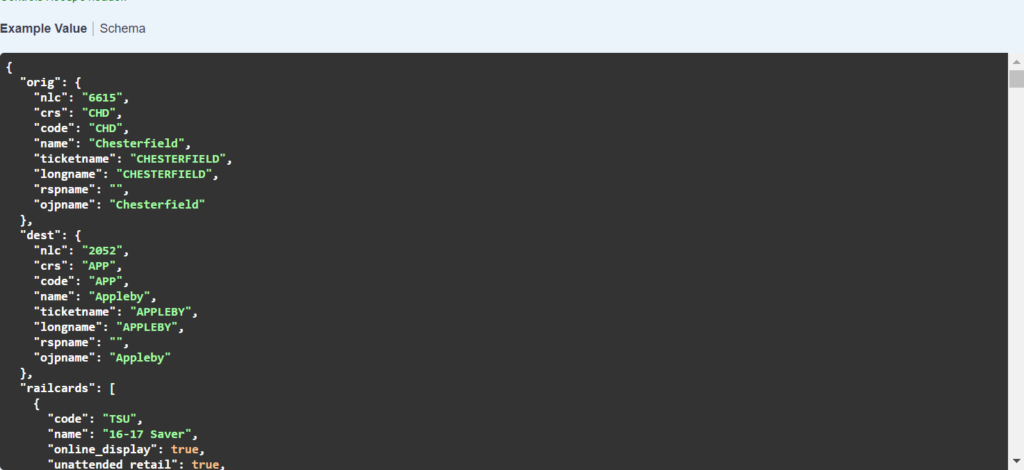
We have now launched our Easy Fares API. The Easy Fares API provides relevant and useful data on all fares that are not seasons or carnets, ranging from valid walk-up fares through to fares which are valid with a smartcard. (Seasons, carnets and rovers/rangers are already covered by our existing APIs.) Before I dive into the details of what the API does, I want to give some background on how this API was developed.
The concept of the Easy Fares API evolved from our legacy API. The BR Fares website has been a web app since 2012 – all the “human-readable” user-interface elements are rendered in JavaScript code running directly in the user’s web browser, and once the site is loaded, communication with the central BR Fares servers is limited to an exchange of the actual fares data for the different journeys. This internal API was never initially intended for public use, but rather an internal API, which exposed the raw database structure. We found however, that many people who took an active interest in fares started using it anyway!
The internal API we are now calling the BR Fares Legacy API.
What distinguishes the Legacy API and Easy Fares is that the Legacy API exposes the raw fares database structure, which is of interest to those who understand fares and are interested in the structures of fares, however unlike the new Easy Fares API, it doesn’t provide all the main information needed from the point of view of the passenger:
- there is not a clear separation of fares which can be sold walk-up on the day and those which have restrictions on sale
- there is no information on smartcard fulfilment, or which fares are permitted to be issued as e-tickets
This is all included in the Easy Fares API. In a nutshell, it provides data which is useful from the passenger’s point of view. It combines disparate industry data sources into a clear easy-to-use source of information, similarly to the season ticket price API and the rovers & rangers API, which we already launched in 2021.
What are the key features of the API?
Fares are grouped into the following categories:
- Walk-Up fares, i.e. those that may be sold on-the-day for immediate travel (as well as up to a year in advance of the travel date)
- Pay-as-you-Go fares, i.e. those that are accounted for in a non-standard way such as under a usage-based scheme
- Restricted Availability fares, i.e. those that must be purchased in advance, require a reservation or travel on a specific train, or that may only be purchased in combination with such a fare
- Unavailable fares, generally fares that are indicated in some way as not valid for sale
For each fare all information required to display it to a passenger, and to sell and fulfil, it is included:
- ALL single and return fares
- accurate text wording for display on tickets
- up to 3 railcards/discounts may be specified per-search
- information on print format and smartcard fulfilment
- historical fares information for (the past 2 years)
See link to the API:
https://www.brfares.com/api/easy/
Who would benefit from using the API?
Suppliers and train companies providing fares information would benefit from using this API. Essentially anyone accredited to sell fares, or those who need to provide accurate information on which fares are available to sell. Again, like our other APIs, Easy Fares provides complex fares data in a readable and easy to access format and therefore reduces confusion, whilst not compromising accuracy.
If you would like to give it a try, you can sign up for a free trial account here.